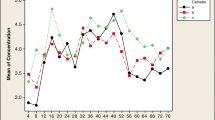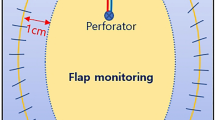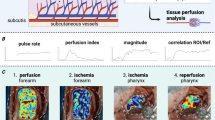Abstract
Microdialysis can be used to detect tissue ischemia. In some experimental and clinical setups, the microdialysis catheter is subjected to external pressure, for example, during monitoring of free flaps or during pressure ulcer research. However, it is not known how external pressure affects the properties of the microdialysis membrane. Therefore, the aim of this study was to measure the concentration of glucose and the volume of a dialysate of a fluid under pressure. Glucose and urea (used for control) were added to plastic bags (n = 12) containing Ringer’s solution to a concentration of 10 mmol/L. A microdialysis catheter (CMA60, CMA Microdialysis AB, Solna, Sweden) was placed in a tube with free communication to the Ringer’s solution. Pressure was set to 0, 100, 200, 300, and back to 0 mmHg, respectively. Microvials were changed every 15 min, and three microvials were sampled at each pressure. The volume of dialysate as well as the concentrations of glucose and urea was measured. The results showed that the sampling volume was significantly higher at 200 and 300 mmHg (p < 0.001), but there was no significant difference at 100 mmHg. The concentrations of glucose and urea did not change significantly with increasing pressure. We conclude that microdialysis is a reliable technique for measuring concentrations of small molecules such as urea and glucose in a fluid under pressure.


Similar content being viewed by others
References
Burkhardt O, Derendorf H, Jager D, Kumar V, Madabushi R, Rohl K, Barth J (2006) Moxifloxacin distribution in the interstitial space of infected decubitus ulcer tissue of patients with spinal cord injury measured by in vivo microdialysis. Scand J Infect Dis 38:904–908
Mantovani V, Kennergren C, Goiny M, Ungerstedt U, Lonnroth P, Sala A, Berglin E (2006) Microdialysis for myocardial metabolic surveillance: developing a clinical technique. Clin Physiol Funct Imaging 26:224–231
Muller M (2000) Microdialysis in clinical drug delivery studies. Adv Drug Deliv Rev 45:255–269
Poling J, Rees W, Klaus S, Bahlmann L, Hubner N, Mantovani V, Warnecke H (2007) Myocardial metabolic monitoring with the microdialysis technique during and after open heart surgery. Acta Anaesthesiol Scand 51:341–346
Rojdmark J, Blomqvist L, Malm M, Adams-Ray B, Ungerstedt U (1998) Metabolism in myocutaneous flaps studied by in situ microdialysis. Scand J Plast Reconstr Surg Hand Surg 32:27–34
Thorfinn, J, Sjöberg, F, and Lidman, D (2009) Sitting can cause ischemia in the subcutaneous tissue of the buttocks, which implicates multilayer tissue damage in the development of pressure ulcers. Scand J Plast Reconstr Surg Hand Surg 43(2):82–89
Stolle LB, Riegels-Nielsen P (2004) The metabolism of the diabetic foot: in vivo investigation with microdialysis. Acta Orthop Scand 75:106–108
Ungerstedt U (1991) Microdialysis—principles and applications for studies in animals and man. J Intern Med 230:365–373
Edsander-Nord A, Rojdmark J, Wickman M (2002) Metabolism in pedicled and free TRAM flaps: a comparison using the microdialysis technique. Plast Reconstr Surg 109:664–673
Sorensen HB (2008) Free jejunal flaps can be monitored by use of microdialysis. J Reconstr Microsurg 24:443–448
Hutchinson PJ, O'Connell MT, Nortje J, Smith P, Al-Rawi PG, Gupta AK, Menon DK, Pickard JD (2005) Cerebral microdialysis methodology—evaluation of 20 kDa and 100 kDa catheters. Physiol Meas 26:423–428
Author information
Authors and Affiliations
Corresponding author
Rights and permissions
About this article
Cite this article
Ansari, D., Farnebo, S. & Thorfinn, J. Microdialysis for free flap monitoring is reliable when used under conditions with increased external pressure—an in vitro study. Eur J Plast Surg 32, 245–247 (2009). https://doi.org/10.1007/s00238-009-0357-0
Received:
Accepted:
Published:
Issue Date:
DOI: https://doi.org/10.1007/s00238-009-0357-0




